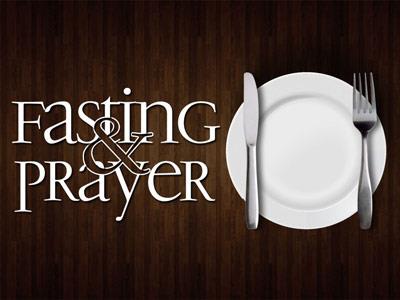-
Prayer Ends Where It Began Series
Contributed by Roger Thomas on Jun 9, 2004 (message contributor)
Summary: Prayer is first and last about seeking God and his glory.
Prayers Ending and Beginning
Dr. Roger W. Thomas, Preaching Minister
First Christian Church, Vandalia, MO
Introduction: Tonight we will consider the doxology with which we traditionally end the Lord’s Prayer. I refer to those words: for thine is the kingdom, the power and the glory forever. A doxology, from the Greek term for glory or praise, is a brief statement of blessing directed toward God. If you look carefully you will note that these words are not found in the text of the New International Version. It is in a footnote at the bottom of the page along with the explanation that it is found in “some late manuscripts.” It is in the text of the King James Version, however. The New American Standard Bible keeps in the text but puts brackets around it and includes a footnote that also says these words were not found in early manuscripts.
It is not really important for our purposes to dig into this issue very deeply. This controversy deals with a field of study known as textual criticism. Here is my short explanation: No one today possesses any of the original manuscripts of the New Testament. As far as we know those originals have long since deteriorated. Copy after copy, however, was made throughout the centuries. The earliest copies were by hand. Obviously human error in the copying process was a real possibility. Textual critics study these ancient manuscripts in an effort to find the oldest and detect any possible errors. The process has advanced greatly in the last couple of centuries as archeologists have unearthed older and older manuscripts. Four hundred years ago Bible translators only had a limited number of ancient copies available to work from. Today the resources have multiplied many fold. This is the reason the KJV which was translated in 1611 AD does differ in a few places from more modern works. The KJV translators did a marvelous job considering what they had to work with. The textual critics have ever found for the most part very few major problems. There are spelling errors, a word left out here and there, or an additional phrase included.
The three most famous differences that you will find between the KJV and more modern translations include this ending to the Lord’s Prayer. The other two well know differences are the “long ending of Mark” and the beginning of John 8 that includes the story of the woman caught in adultery. If you check the NIV and watch for the footnotes or other explanations you will note the differences. In the case of the Lord’s Prayer, most textual critics believe that this doxology was added somewhere within a couple of centuries of the actual New Testament writing. When the Lord’s Prayer eventually began to be used as a part of worship, someone decided that an ending was needed. Without this doxology it ends rather abruptly. As teaching it didn’t need a different ending. For worship, it did.
Almost all Bible scholars acknowledge that it is an addition and not part of the original text of Matthew 6. Regardless, it has become such a standard part of our Christian practice that to most of us it just seems natural. Generally speaking it is quite harmless. It contains no false teachings. All of its ideas and phrases are found elsewhere in the Bible. So we will treat it as a practical, if not an historical, part of the Lord’s Prayer.
Some Bible teachers see in its three-fold doxology an attempt to summarize what they understand to be an allusion to the Trinity in the structure of the Lord’s Prayer. The term Trinity, as you know, is the theological shorthand for the fact that the God we worship has revealed himself as Father-Son-Holy Spirit. Our God is one God, not three, but he has chosen to reveal himself and relate to us in these three different persons or revelations. Bible scholars note that the Lord’s Prayer divides into three big sections. The first section calls upon the Father—the sovereign creator whose rule and providence provides our daily bread. The lines about forgiveness call to mind the saving atonement of the Son and to his teaching about the practice of forgiveness. The last main section speaks of the Spirit’s indwelling that assures guidance, safety and triumph over evil. The doxology brings these together under the headings of kingdom, power, and glory.
What do we learn from this doxology? What does it teach us about prayer especially the Lord’s Prayer? Let’s first examine the character of this statement and then the specific contents of it.
First, the doxology reminds us that prayer is only as good as the one we are talking to. The power of prayer does not lie in our hands or even our faith. It is the object of prayer—the one to whom we are praying—that matters. It is good to be reminded that the sovereign Lord of the Universe is the one we are addressing. We don’t force him to answer our prayers. Our words, not even the Lord’s Prayer, are not magic formulas designed to pry a blessing from his hands. Real prayer acknowledges that the power of prayer rests in God’s hands. That is what we confess with this doxology.

 Sermon Central
Sermon Central



